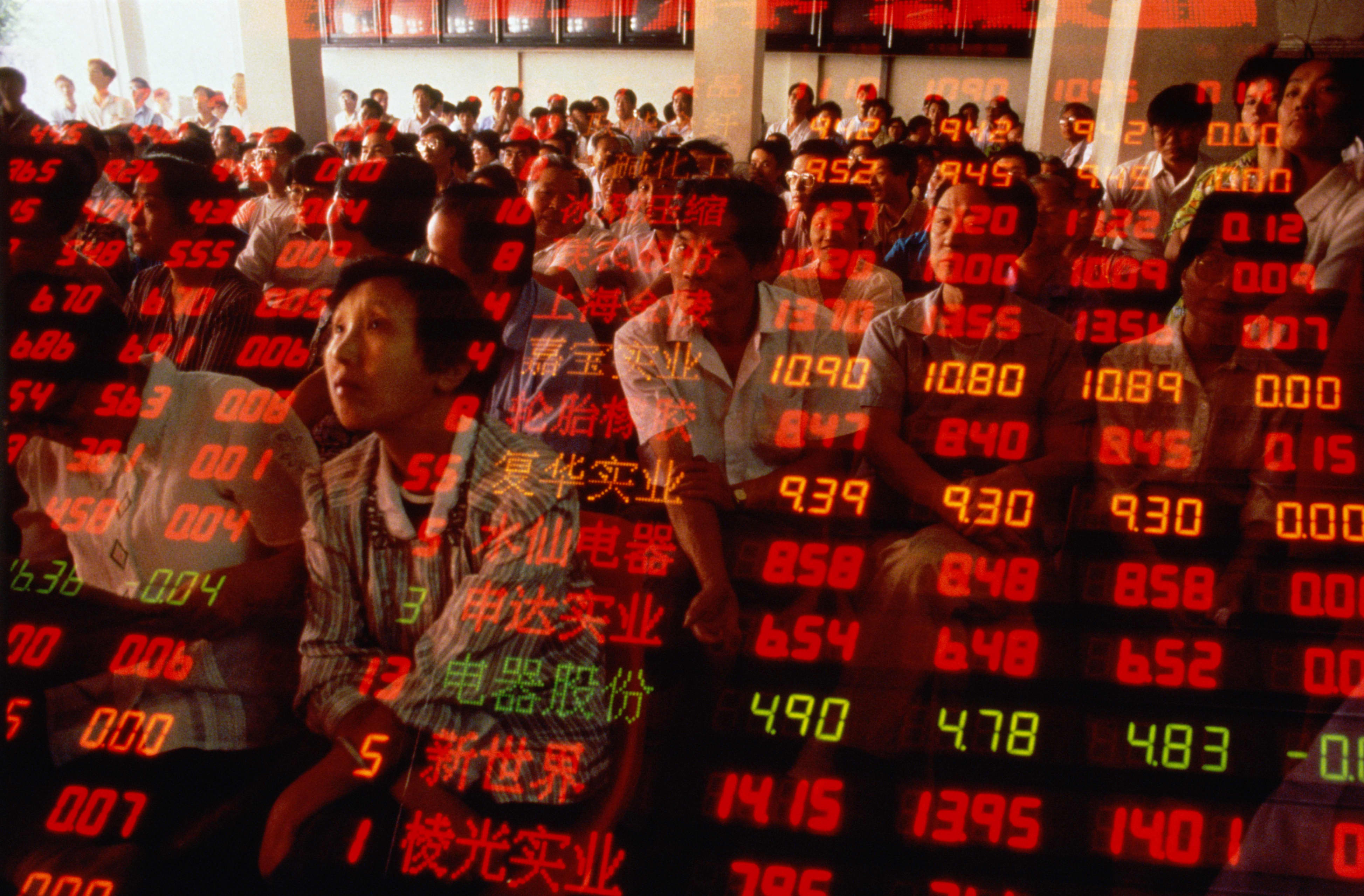
The Shanghai stock exchange in China.
China Tourism Press | The Image Bank | Getty Images
From Wall Street to Asia, the recent sell-off in global stock markets has triggered trading halts in multiple stock exchanges — an occurrence that could become increasingly common as investors fear the impact of the coronavirus outbreak.
In the U.S., trading was temporarily stopped twice this week after the S&P 500 Index fell 7% — triggering the first threshold for a "circuit breaker," aimed at preventing markets from wild swings.
In Asia, circuit breakers were also triggered in many exchanges including India, Japan, South Korea, Indonesia, Thailand and the Philippines this week.
Circuit breakers are measures implemented by exchanges when they consider price movements to be overly volatile. They can take the form of a trading suspension or limiting buying and selling of securities within a specific price range.
Jurisdictions and stock exchanges have their own rules for what circuit breakers entail, when do they kick in, and for how long they are in place.
Here are what circuit breakers at some of Asia's main stock exchanges are like.
Greater China
Both the Shanghai and Shenzhen stock exchanges will suspend trading for 15 minutes when the CSI 300 Index rises or falls by 5% or more from its previous close for the first time.
If the index rises or falls by 7% or more from the previous close, trading will be halted for the day.
Products that are subject to circuit breakers include stocks, mutual funds and certain bonds.
Over at the Hong Kong stock exchange, the circuit breaker currently applies only to the constituent stocks of the Hang Seng Index and the Hang Seng China Enterprise Index.
In Hong Kong, the circuit breaker is based on a "reference price" — or the last traded price 5 minutes ago. A cooling-off period is triggered if the price of a stock goes above or below 10% from the reference price. During the cooling-off period, which lasts for 5 minutes, trading is allowed only within a fixed price band of 10% above or below the reference price.
Starting from May, the Hong Kong stock exchange will expand its circuit breaker to cover another 500 or so stocks, and the reference price that will trigger a cooling period will also be tiered according to market capitalization.
Japan
The Japan Exchange Group, the company that manages the country's main exchanges, apply trading halts to all futures and options contracts, as well as derivative products relating to futures and options.
Each product has its own "price limit range" that will trip the circuit breakers, some of which will be revised every few months using a formula that takes into account past price trends.
Trading will be suspended for 10 minutes when that limit range is breached.
South Korea
In South Korean markets, trading of all listed securities (excluding debt securities) will be suspended for 20 minutes if the respective benchmark index — Kospi or Kosdaq — falls by more than 10% from the previous day's closing price.
The triggering of circuit breakers is limited to once per day.
India
Circuit breakers in India are triggered when the Nifty 50 or Sensex breaches a pre-determined limit. That limit is 10%, 15% and 20% above or below the indexes' respective previous day close.
Depending on which limit is breached, a market-wide trading halt will last from 15 minutes to 1 hour 45 minutes, or even close for the day.
Singapore
The Singapore Exchange applies circuit breakers to component stocks of the Straits Times Index, MSCI Singapore Index and other products — including stocks and exchange-traded fund — that meet certain criteria.
The circuit breaker in Singapore is triggered when a potential trading price falls outside the "price band," defined as 10% above or below its value within a 5-minute period. That value is called the "reference price."
When the trading curbs are in place, a 5-minute cooling-off period will take place, where trading can only be done within 10% above or below that reference price.
Indonesia
Indonesia revised rules on its circuit breaker this week. Under the new rules, trading will halt for 30 minutes if the main stock index — the Jakarta Composite Index — falls by 5% or more from the previous close.
Before the latest change, the index had to drop by 10% or more before the circuit breaker kicks in.
Thailand
A 30-minute trading halt takes place on all listed securities when the benchmark SET Index falls by 10% from the previous day's close. If the SET Index falls by 20% from the previous close, trading will be halted for an hour.
"how" - Google News
March 13, 2020 at 03:11PM
https://ift.tt/3aPLTWJ
'Circuit breakers' are being triggered across Asia — here's how they differ across major markets - CNBC
"how" - Google News
https://ift.tt/2MfXd3I
Bagikan Berita Ini















0 Response to "'Circuit breakers' are being triggered across Asia — here's how they differ across major markets - CNBC"
Post a Comment